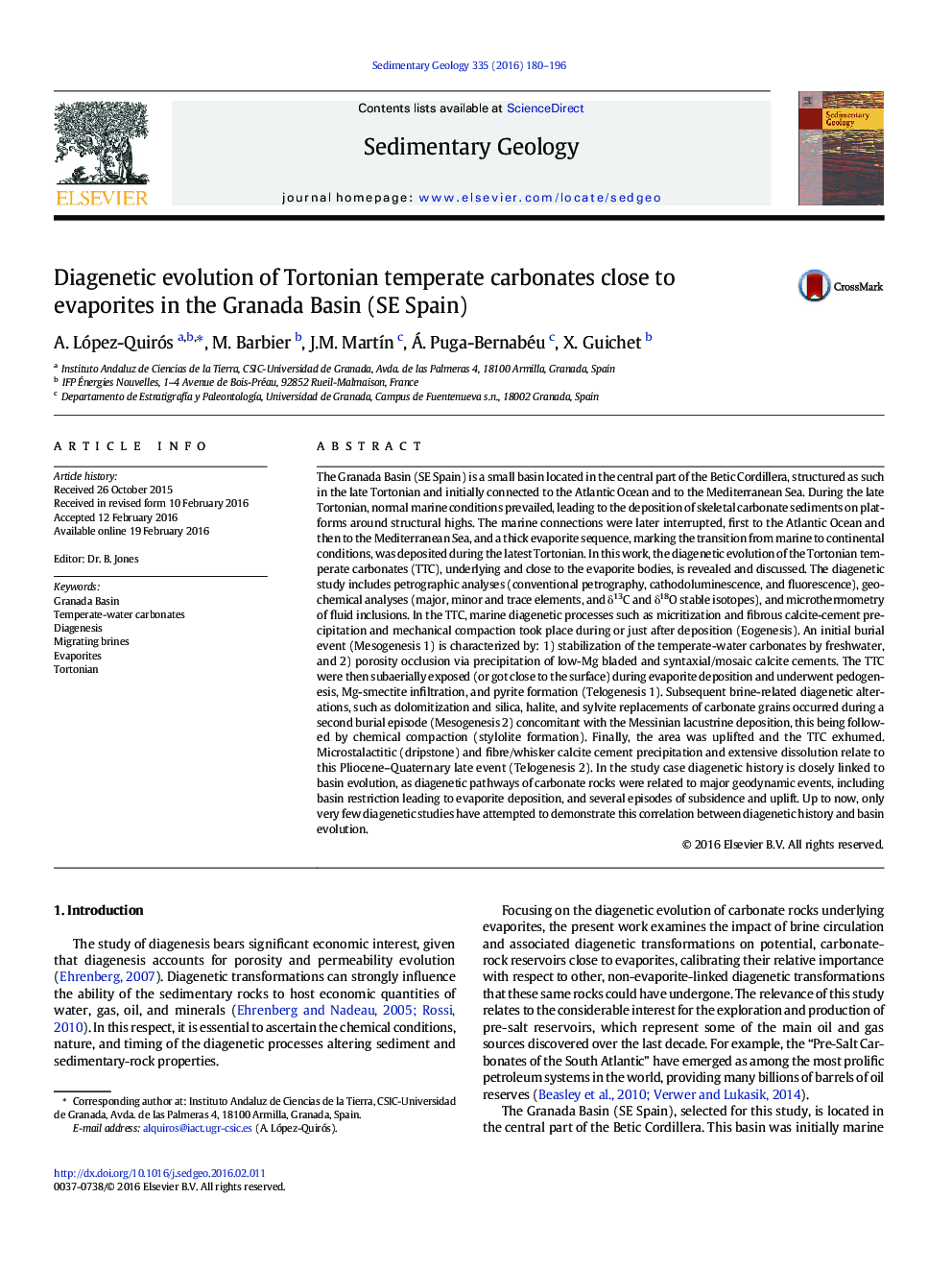| کد مقاله | کد نشریه | سال انتشار | مقاله انگلیسی | نسخه تمام متن |
|---|---|---|---|---|
| 4689098 | 1636028 | 2016 | 17 صفحه PDF | دانلود رایگان |

• The diagenetic history of temperate-water carbonates underlying evaporites is shown.
• Diagenetic processes fit well within sedimentary and tectonic evolution of the basin.
• Two main burial episodes separated by a minor subaerial exposure event distinguished
• Brines percolating from the evaporites promote dolomite, silica and halite formation.
The Granada Basin (SE Spain) is a small basin located in the central part of the Betic Cordillera, structured as such in the late Tortonian and initially connected to the Atlantic Ocean and to the Mediterranean Sea. During the late Tortonian, normal marine conditions prevailed, leading to the deposition of skeletal carbonate sediments on platforms around structural highs. The marine connections were later interrupted, first to the Atlantic Ocean and then to the Mediterranean Sea, and a thick evaporite sequence, marking the transition from marine to continental conditions, was deposited during the latest Tortonian. In this work, the diagenetic evolution of the Tortonian temperate carbonates (TTC), underlying and close to the evaporite bodies, is revealed and discussed. The diagenetic study includes petrographic analyses (conventional petrography, cathodoluminescence, and fluorescence), geochemical analyses (major, minor and trace elements, and δ13C and δ18O stable isotopes), and microthermometry of fluid inclusions. In the TTC, marine diagenetic processes such as micritization and fibrous calcite-cement precipitation and mechanical compaction took place during or just after deposition (Eogenesis). An initial burial event (Mesogenesis 1) is characterized by: 1) stabilization of the temperate-water carbonates by freshwater, and 2) porosity occlusion via precipitation of low-Mg bladed and syntaxial/mosaic calcite cements. The TTC were then subaerially exposed (or got close to the surface) during evaporite deposition and underwent pedogenesis, Mg-smectite infiltration, and pyrite formation (Telogenesis 1). Subsequent brine-related diagenetic alterations, such as dolomitization and silica, halite, and sylvite replacements of carbonate grains occurred during a second burial episode (Mesogenesis 2) concomitant with the Messinian lacustrine deposition, this being followed by chemical compaction (stylolite formation). Finally, the area was uplifted and the TTC exhumed. Microstalactitic (dripstone) and fibre/whisker calcite cement precipitation and extensive dissolution relate to this Pliocene–Quaternary late event (Telogenesis 2). In the study case diagenetic history is closely linked to basin evolution, as diagenetic pathways of carbonate rocks were related to major geodynamic events, including basin restriction leading to evaporite deposition, and several episodes of subsidence and uplift. Up to now, only very few diagenetic studies have attempted to demonstrate this correlation between diagenetic history and basin evolution.
Figure optionsDownload high-quality image (308 K)Download as PowerPoint slide
Journal: Sedimentary Geology - Volume 335, 15 April 2016, Pages 180–196